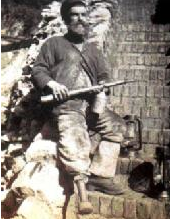Last month the people at that wonderful (and horribly addictive) interior design website Houzz asked me to write a story about colour for their February Colour Month. It was a great chance to remember some of the extraordinary interiors stories I found while researching my Colour book, including George Washington’s insistence that his new dining room should be a particular fashionable green, made from verdigris (interestingly it was a British fashion, and he was writing home from the battlefield where he was fighting against the British in the American War of Independence.)
I also remembered one story which particularly delighted me at the time, (even though I have never had a comment about it from anyone which suggests I might have been a bit geeky) which was about the problems of painting pillar boxes red, or rather of finding a red paint that stayed red and didn’t drift to a cloudy and faded pink. For that one I spent a whole day in the Post Office archives in London, pulling out of storage letters written by angry ex Admirals who said the splotchy colour was unreasonably ugly on their streets in nice places like Tunbridge Wells, and perhaps the Post Office should bite the bullet and paint the boxes battleship grey, which at least would stand the British weather.

I took this in Bath’s Great Pulteney Street: this wonderful old pillar box has no doubt been repainted many times since it was first installed more than a century ago
There were also some awful tales about how children’s bedrooms in Victorian times were painted or wallpapered in one particular emerald green, which was seen as being jolly for children but which in reality was full of arsenic, and responsible for some horrible deaths and sicknesses. Yet despite that, at a talk given at London’s Royal Academy in the 1870s, there were still a few people who said that they didn’t care about the consequences; it was too marvellous a colour not to use. Here’s the Houzz story.



